As a passionate home cook, I’ve always loved the rich flavors of a perfectly cooked pork loin ribeye roast. In this guide, I’m excited to share my secrets for achieving a juicy, tender, and delectable roast every time.
To skillfully cook a mouthwatering pork loin ribeye roast, begin with choosing a top-quality cut of meat. Elevate its taste by preparing it with a scrumptious rub or marinade. Choose your preferred cooking method: roast the meat in the oven at 350°F (175°C), grill it over medium heat, or use a slow cooker on low setting. Regardless of the method, ensure it reaches an ideal internal temperature of 145°F (63°C) for a tender and juicy result.
This step-by-step guide will walk you through selecting, preparing, and cooking a pork loin ribeye roast to perfection, while offering helpful tips and suggestions for side dishes, carving techniques, and frequently asked questions. By following this guide, you’ll impress your guests and elevate your cooking skills to new heights.
- Selecting the Perfect Pork Loin Ribeye Roast
- Size and Weight Considerations
- Getting Your Pork Loin Ribeye Roast Ready for Showtime
- Toast It Roast It’s Garlic and Herb Rub for Pork Loin Ribeye Roast: Recipe and Instructions
- Cooking Methods and Tips for Pork Loin Ribeye Roast
- Cooking Temperatures and Times for Pork Loin Ribeye Roast
- FAQ
- How long should I marinate a pork loin ribeye roast?
- Can I stuff a pork loin ribeye roast?
- What is the best way to reheat leftover pork loin ribeye roast?
- Is pork ribeye roast the same as pork loin?
- Can I use pork loin ribeye roast for pulled pork?
- Conclusion
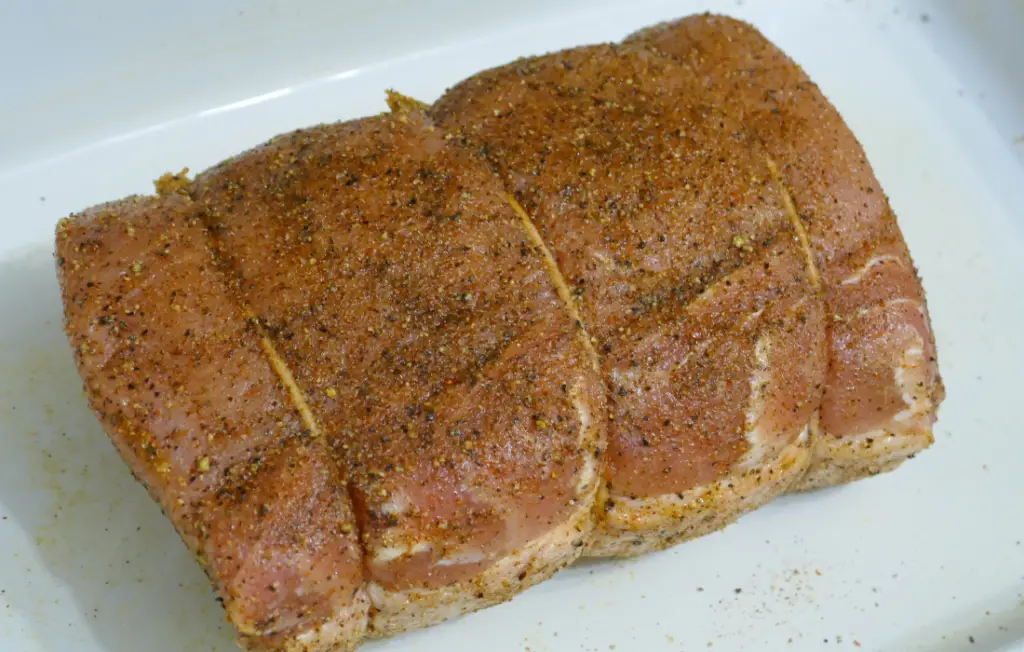
Selecting the Perfect Pork Loin Ribeye Roast
Boneless vs. Bone-In Pork Loin Ribeye Roast
When selecting a pork loin ribeye roast, one of the first decisions you need to make is whether to choose a boneless or bone-in cut. Boneless roasts typically have a milder flavor and tender texture, while bone-in roasts boast a richer, more robust flavor. Carving a boneless roast is simpler, but bone-in roasts offer a more visually impressive presentation. Keep in mind that boneless roasts tend to be more expensive than their bone-in counterparts.
Comparison Chart:
| Feature | Boneless Pork Loin Ribeye Roast | Bone-In Pork Loin Ribeye Roast |
|---|---|---|
| Cooking Time | Faster cooking time | Longer cooking time |
| Flavor | Mild, tender texture | Richer, more robust flavor |
| Carving | Easier to carve | Requires more skill to carve |
| Presentation | Simple and uniform | More visually impressive |
| Price | Generally more expensive | Often more affordable |
Size and Weight Considerations
Another important factor to consider when choosing a pork loin ribeye roast is the size and weight of the cut. This will not only determine the cooking time but also affect the number of servings. As a rule of thumb, plan for about ½ pound (225g) per person for boneless roasts and ¾ pound (340g) per person for bone-in roasts. Consider the number of guests you’ll be serving and choose a roast that meets your needs, ensuring everyone will be satisfied at the dinner table.
Serving Size Table:
Getting Your Pork Loin Ribeye Roast Ready for Showtime
Marinating or Brining: Which Way to Go?
Before cooking your pork loin ribeye roast, you might consider marinating or brining to add extra flavor and tenderness. Marinating involves soaking the meat in a flavorful liquid, usually a combination of oil, vinegar or citrus juice, and various herbs and spices. This process infuses the meat with flavor and can help tenderize it. Brining, on the other hand, involves soaking the meat in a saltwater solution, which adds moisture and flavor to the roast. Both methods have their merits, so experiment and see which one tickles your taste buds the most!
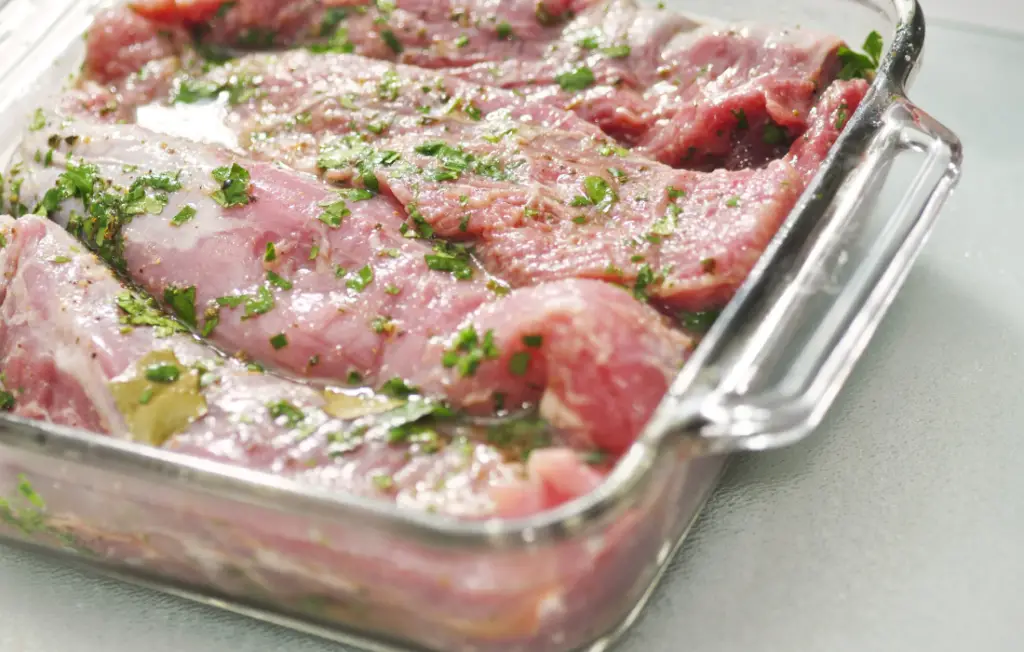
The A-List of Seasonings and Rubs for Pork Loin Ribeye Roast
Selecting the perfect rub or seasoning blend for your pork loin ribeye roast is like choosing the right outfit for a night out – it sets the mood for the entire experience. Here are some top-notch options to consider:
- Garlic and Herb: A classic blend of garlic, rosemary, thyme, and sage. It’s a timeless combination that’ll have your taste buds singing praises.
- Sweet and Spicy: Combine brown sugar, paprika, cayenne pepper, and cinnamon for a sweet heat that’ll make your roast the life of the party.
- Smoky BBQ: Channel those summer vibes with a mix of smoked paprika, brown sugar, onion powder, and a touch of cumin. Your roast will be the ultimate barbecue star.
- Citrus and Spice: Zest up your roast with a blend of orange and lemon zest, coriander, and crushed red pepper flakes. It’s a fresh and zesty twist that’ll leave your guests wanting more.
Remember, the key to an unforgettable pork loin ribeye roast is selecting the right flavor profile to match your personal taste and the preferences of your guests. Feel free to mix and match or even create your own signature blend!
Toast It Roast It’s Garlic and Herb Rub for Pork Loin Ribeye Roast: Recipe and Instructions
Elevate your pork loin ribeye roast with our special blend flavor-packed garlic and herb rub. This recipe brings together aromatic herbs and spices that complement the natural flavors of the pork, making it a crowd-pleaser for any occasion.
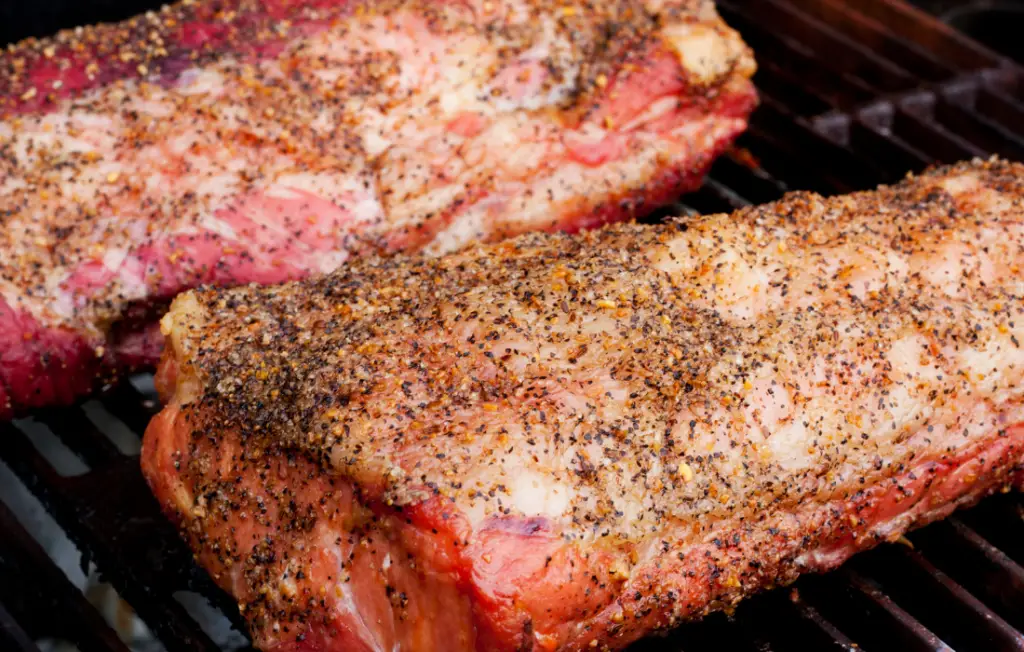
Ingredients:
- 4 cloves garlic, minced
- 2 tablespoons fresh rosemary, finely chopped
- 2 tablespoons fresh thyme, finely chopped
- 2 tablespoons fresh sage, finely chopped
- 2 teaspoons kosher salt
- 1 teaspoon freshly ground black pepper
- 3 tablespoons olive oil
Instructions:
- In a small bowl, combine the minced garlic, finely chopped rosemary, thyme, and sage. Mix well to evenly distribute the herbs.
- Add the kosher salt and freshly ground black pepper to the herb mixture. Stir to incorporate the seasonings.
- Pour the olive oil into the bowl and mix until a paste-like consistency is achieved. If the mixture appears too dry, add an additional tablespoon of olive oil.
- Pat the pork loin ribeye roast dry with paper towels, ensuring the surface is free of excess moisture.
- Using your hands or a brush, apply the garlic and herb rub evenly over the entire surface of the roast, massaging the mixture into the meat to ensure maximum flavor penetration.
- Allow the roast to rest for at least 30 minutes, or, for best results, cover and refrigerate for up to 24 hours to let the flavors fully meld.
- Remove the roast from the refrigerator 30 minutes before cooking to allow it to come to room temperature. Proceed with your preferred cooking method, such as roasting or grilling.
This garlic and herb rub is a simple yet effective way to add depth of flavor to your pork loin ribeye roast, making it a standout dish for your next dinner party or family gathering.
Print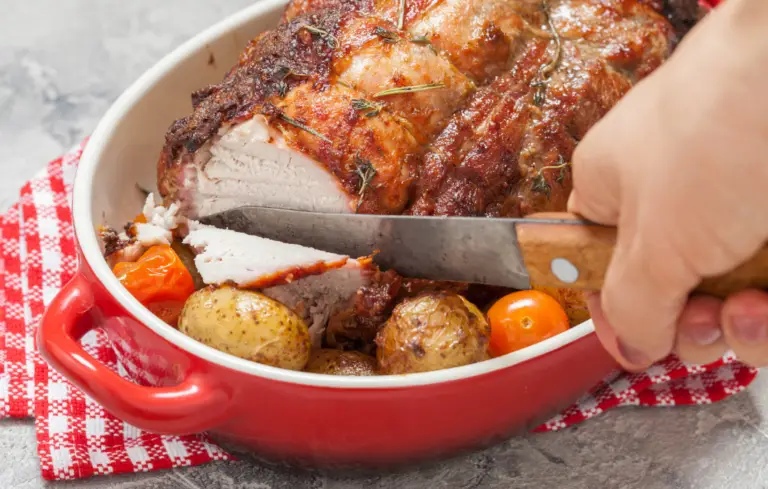
Garlic and Herb Rubbed Pork Loin Ribeye Roast (Oven-Roasted)
A succulent and tender pork loin ribeye roast seasoned with a fragrant garlic and herb rub. Roasted to perfection, it’s a delightful main dish for any occasion.
- Total Time: 1 hour, up to 24 hours for marinating
- Yield: Varies (depends on the size of the pork loin ribeye roast
Ingredients
- 4 cloves garlic, minced
- 2 tablespoons fresh rosemary, finely chopped
- 2 tablespoons fresh thyme, finely chopped
- 2 tablespoons fresh sage, finely chopped
- 2 teaspoons kosher salt
- 1 teaspoon freshly ground black pepper
- 3 tablespoons olive oil
- Pork loin ribeye roast
Instructions
- Preheat your oven to 375°F (190°C).
- Combine minced garlic, rosemary, thyme, sage, kosher salt, black pepper, and olive oil in a small bowl to make the rub.
- Pat the pork loin ribeye roast dry with paper towels. Apply the garlic and herb rub evenly over the roast, massaging the mixture into the meat.
- Let the roast rest for at least 30 minutes, or refrigerate for up to 24 hours for better flavor infusion.
- Remove the roast from the refrigerator 30 minutes before cooking to let it come to room temperature.
- Line a roasting pan with foil for easy cleanup and place a rack in the pan. Place the pork roast on the rack.
- Roast the pork loin in the preheated oven for about 20-25 minutes per pound, or until the internal temperature reaches 145°F (63°C).
- Once the pork roast is cooked to your liking, remove it from the oven, and tent it with foil. Allow it to rest for about 15 minutes before slicing.
Notes
For a more intense flavor, let the pork roast marinate in the fridge for up to 24 hours. If the mixture appears too dry, add an additional tablespoon of olive oil. Always use a meat thermometer to ensure your pork is cooked to the proper temperature.
- Prep Time: 10 minutes (plus marinating time)
- Cook Time: 20-25 minutes per pound
- Category: Main Course
- Method: Roasting
- Cuisine: International
Cooking Methods and Tips for Pork Loin Ribeye Roast
Now that you’ve chosen and prepared your pork loin ribeye roast, it’s time to cook it to perfection! Here, we’ll explore three popular cooking methods – oven roasting, grilling, and slow cooking – and provide helpful tips to ensure your roast turns out mouthwateringly delicious.
By understanding the differences between oven roasting, grilling, and slow cooking, you’ll be able to choose the best method for your pork loin ribeye roast and achieve a tender, juicy, and flavorful result.
Oven Roasting: Classic and Consistent
Oven roasting is a tried-and-true method for cooking pork loin ribeye roasts. This technique provides consistent results and allows for precise temperature control.
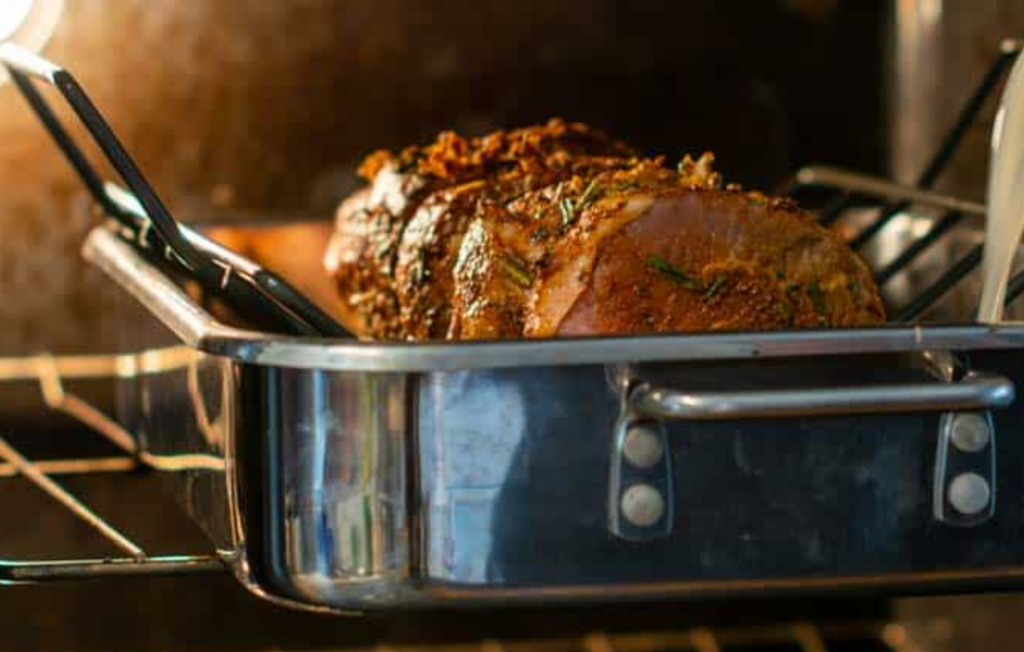
- Preheat your oven to 350°F (175°C).
- Place the seasoned roast on a rack in a shallow roasting pan.
- Cook for approximately 20-25 minutes per pound, or until an internal temperature of 145°F (63°C) is reached.
- Let the roast rest for 10 minutes before slicing to retain its juiciness.
Grilling: Outdoor Flavors and Char
Grilling is a fantastic way to impart a smoky, charred flavor to your pork loin ribeye roast. This method is perfect for outdoor gatherings and summer cookouts.
- Preheat your grill to medium-high heat.
- Place the seasoned roast on the grill, searing each side for 3-4 minutes to develop a crust.
- Reduce the heat to medium and cook the roast for approximately 20-25 minutes per pound, or until an internal temperature of 145°F (63°C) is reached.
- Let the roast rest for 10 minutes before slicing.
Slow Cooking: Tender and Effortless
Slow cooking is an ideal method for those who want to set it and forget it. This method yields a tender, juicy, and fall-apart roast with minimal effort.
- Place the seasoned roast in the slow cooker, along with any desired liquids or aromatics.
- Cook on low for 8-10 hours, or until the roast reaches an internal temperature of 145°F (63°C).
- Remove the roast from the slow cooker and let it rest for 10 minutes before slicing.
Comparison:
| Method | Flavor Profile | Cook Time | Skill Level |
|---|---|---|---|
| Oven Roasting | Classic, mild | 20-25 min/lb | Intermediate |
| Grilling | Smoky, charred | 20-25 min/lb | Intermediate |
| Slow Cooking | Tender, juicy | 8-10 hours | Easy |
By understanding the unique characteristics of each cooking method, you can confidently choose the best approach for your pork loin ribeye roast and impress your guests with a delicious and memorable meal.
Cooking Temperatures and Times for Pork Loin Ribeye Roast
Achieving the perfect doneness for your pork loin ribeye roast is crucial to ensure a tender, juicy, and flavorful result. Here, we’ll discuss the optimal cooking temperatures and times for oven roasting, grilling, and slow cooking, as well as the internal temperature guidelines for a perfectly cooked roast.
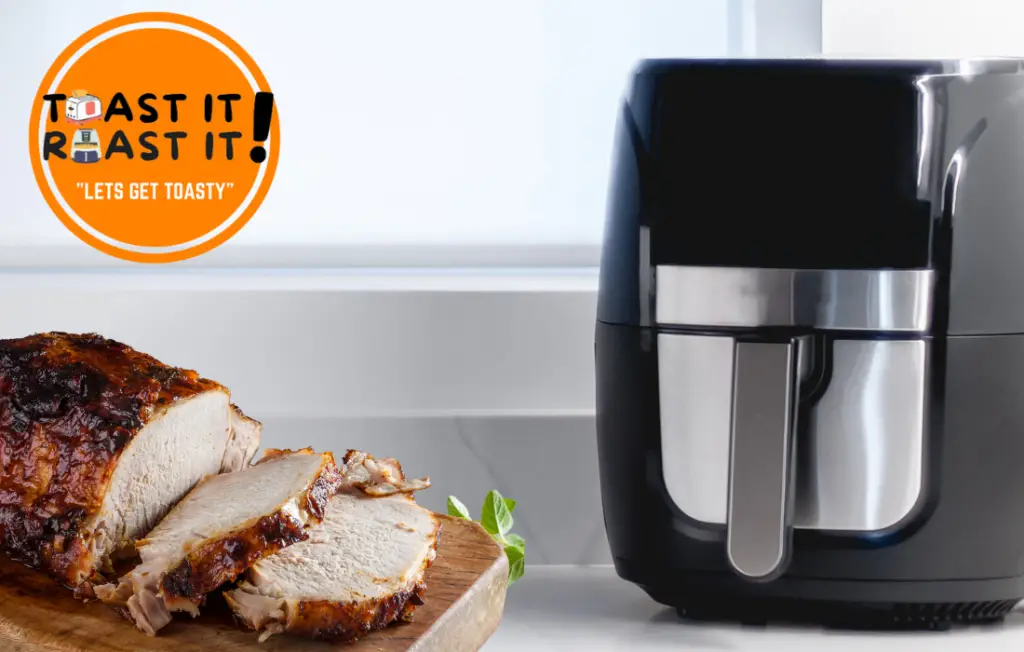
Oven Roasting
Oven roasting provides even heat distribution and precise temperature control for a consistently cooked pork loin ribeye roast.
- Preheat your oven to 350°F (175°C).
- Roast the pork for approximately 20-25 minutes per pound.
Grilling
Grilling imparts a smoky, charred flavor to the roast while providing a crisp outer crust.
- Preheat your grill to medium-high heat.
- Sear each side of the roast for 3-4 minutes to develop a crust.
- Reduce the heat to medium and grill the roast for approximately 20-25 minutes per pound.
Slow Cooking
Slow cooking is an effortless method for tender, juicy results with minimal hands-on time.
- Place the roast in the slow cooker, along with any desired liquids or aromatics.
- Cook on low for 8-10 hours.
Internal Temperature Guidelines
Using a meat thermometer is the most accurate way to determine the doneness of your pork loin ribeye roast. The USDA recommends a minimum internal temperature of 145°F (63°C) for safe consumption, followed by a 10-minute resting period to allow the juices to redistribute.
- Rare: Not recommended for pork
- Medium-Rare: Not recommended for pork
- Medium (145°F / 63°C): Slightly pink center, tender, and juicy
- Medium-Well (150°F / 66°C): Mostly brown with a hint of pink, still tender
- Well-Done (160°F / 71°C): Fully cooked through, may be slightly drier
By following these cooking temperature and time guidelines for oven roasting, grilling, and slow cooking, as well as adhering to the recommended internal temperature, you’ll be able to serve a perfectly cooked pork loin ribeye roast that will delight your guests.
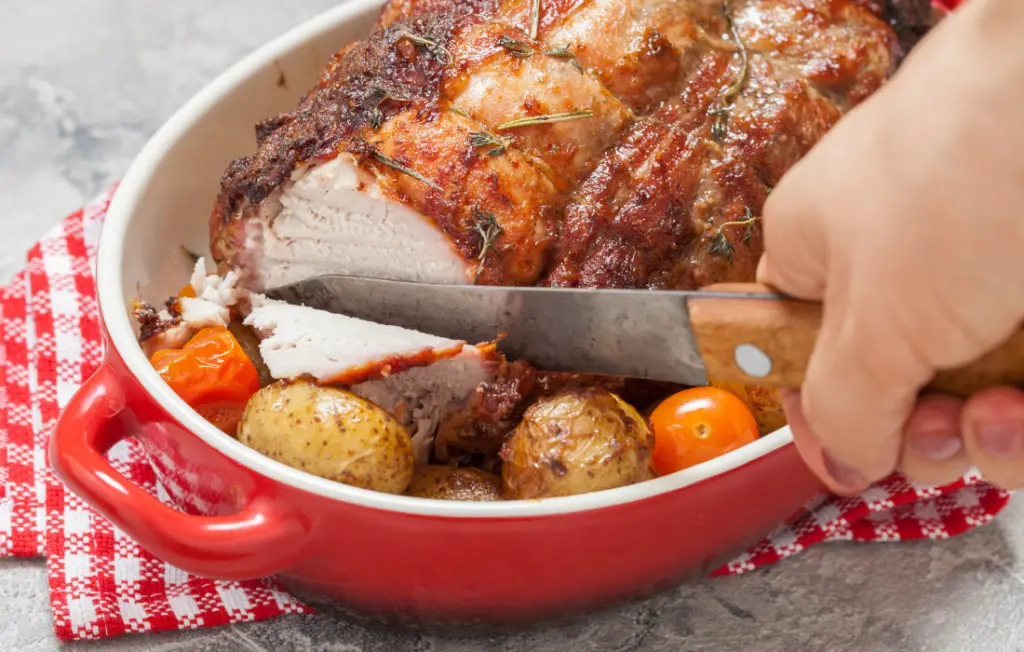
FAQ
How long should I marinate a pork loin ribeye roast?
Marinating a pork loin ribeye roast is a great way to add flavor and tenderness to your meat. Ideally, you should marinate your roast for at least 2-4 hours or overnight, depending on how intense you want the flavor to be. Don’t forget to refrigerate your roast while it’s marinating to prevent any potential food safety issues.
Can I stuff a pork loin ribeye roast?
Yes, you definitely can! Stuffed pork loin ribeye roast is a popular and flavorful dish. You can stuff it with a variety of ingredients such as apples, cranberries, herbs, and even cheese. Just make sure to cut a pocket in the roast and gently fill it with your desired stuffing before cooking.
What is the best way to reheat leftover pork loin ribeye roast?
To prevent your leftover pork loin ribeye roast from drying out, the best way to reheat it is to use a low and slow method. You can wrap your roast in foil and reheat it in the oven at 325°F until it reaches an internal temperature of 165°F. Another option is to reheat it in a covered dish with a little bit of liquid, such as broth or water, in the microwave or on the stovetop.
Is pork ribeye roast the same as pork loin?
Although both pork ribeye roast and pork loin come from the same area of the pig, they are not exactly the same cut of meat.
Pork ribeye roast is cut from the same part of the pig as a beef ribeye, and it contains more marbling and fat than a pork loin. This extra fat gives the pork ribeye roast more flavor and tenderness, making it a great cut for roasting.
On the other hand, pork loin is a leaner cut of meat that comes from the back of the pig. It has less fat and more meat compared to a pork ribeye roast. Pork loin is also great for roasting and can be prepared in a variety of ways.

So while they come from the same general area, pork ribeye roast and pork loin are different cuts of meat with slightly different characteristics.
Can I use pork loin ribeye roast for pulled pork?
Yes, you can use a pork loin ribeye roast for pulled pork, but it may not be the best cut for this purpose. Pork loin ribeye roast is a leaner cut of meat, which means it can become dry if cooked for an extended period, as is the case with pulled pork recipes.
Pulled pork is typically made from cuts with higher fat content and connective tissue, such as pork shoulder (also known as Boston butt) or pork picnic roast. These cuts become tender and juicy when cooked low and slow, as the fat and connective tissue break down, resulting in the desired fall-apart texture for pulled pork.
If you choose to use a pork loin ribeye roast for pulled pork, you may need to adjust your cooking method and monitor the roast closely to prevent it from becoming too dry. You can also consider adding extra liquid, such as broth or barbecue sauce, to help maintain moisture during the cooking process.
Conclusion
Now that you have some great tips and tricks for cooking and preparing your pork loin ribeye roast, it’s time to get started! Remember to marinate your roast, stuff it if you desire, and reheat it slowly for the best results. Enjoy your perfectly cooked pork loin ribeye roast!

